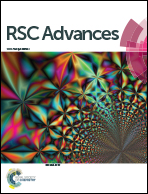Design and tailoring of three-dimensional graphene–Vulcan carbon–Bi2S3 ternary nanostructures for high-performance lithium-ion-battery anodes
Abstract
Design of the structure and morphology of electrode materials is crucial for creating short transport pathways for lithium ions and electrons in high-performance lithium-ion battery systems. Here, a strategy for preparing three-dimensional (3D) carbon-based architectures consisting of bismuth sulfide (Bi2S3) and Vulcan carbon spheres intercalated between graphene sheets is proposed. Bi2S3 nanoparticles were successfully deposited on the graphene/Vulcan carbon composite via a facile ultrasonic route, followed by a thermal treatment process for achieving high crystallinity. In the unique hybrid structure, commercial Vulcan carbon, a low-priced and mass produced carbon material, acts as a nanospacer, thereby preventing the restacking of graphene nanosheets and thus increasing the surface area of the composite. In addition, it also provides an additional electron-transport pathway, increasing the electrolyte/electrode interface contact and facilitating transport of the electrons and lithium ions into the bulk of the composite. Consequently, the 3D graphene–Vulcan carbon–Bi2S3 nanocomposite exhibited a high reversible capacity of 702 mA h g−1 (graphene/Vulcan = 3 : 1 wt%) after 100 cycles and excellent rate performance compared to graphene–Bi2S3 nanocomposites, demonstrating the potential of 3D graphene–Vulcan carbon–Bi2S3 nanocomposites for use as the anode material for lithium-ion batteries.


 Please wait while we load your content...
Please wait while we load your content...